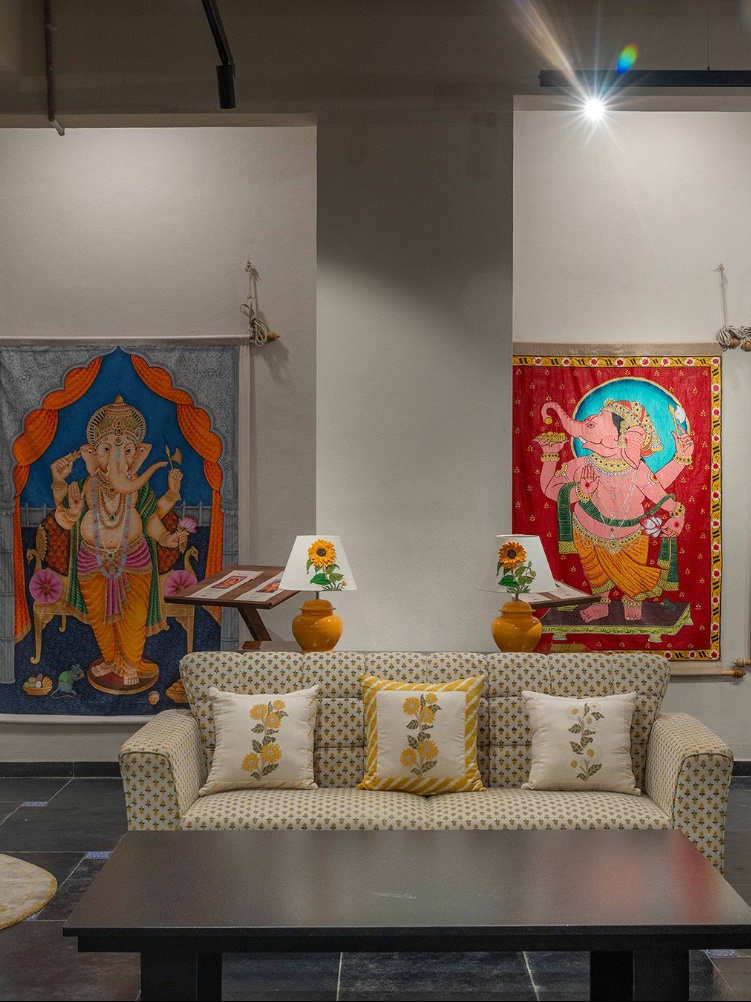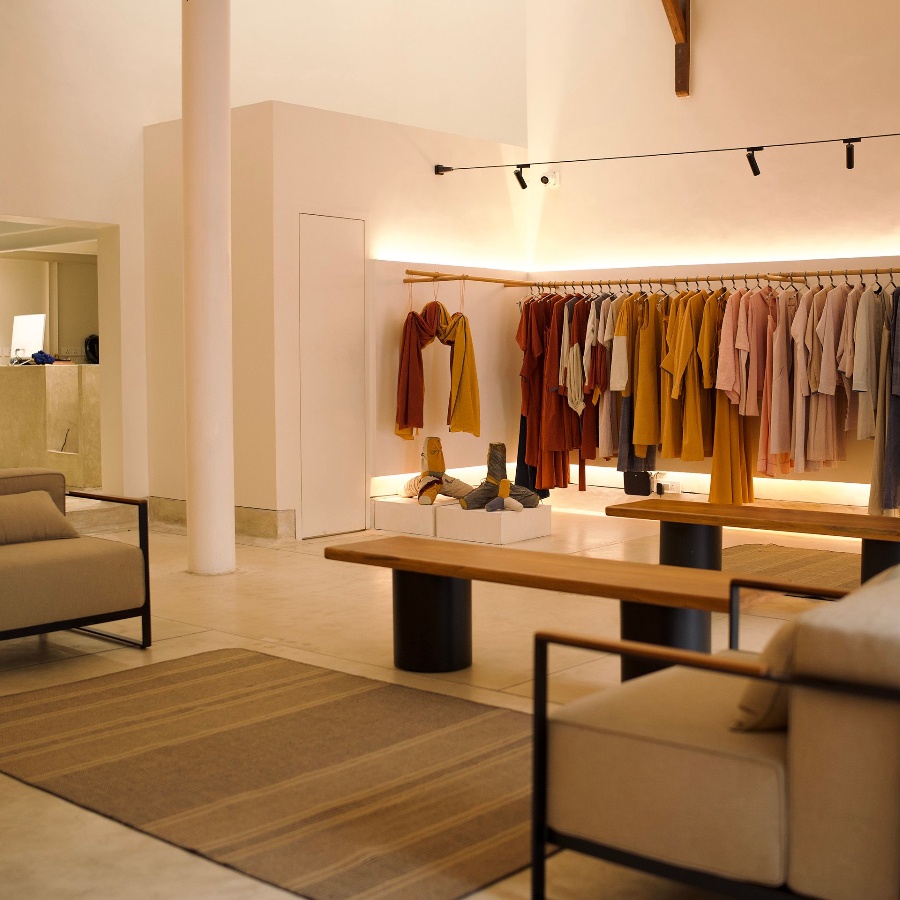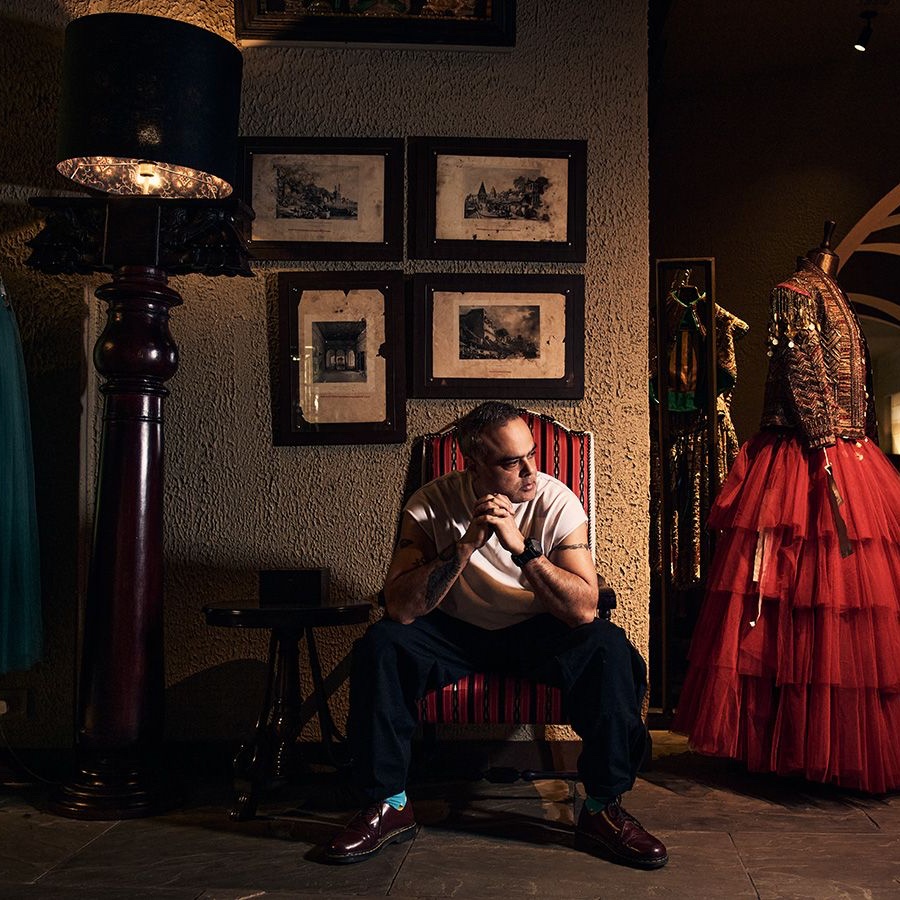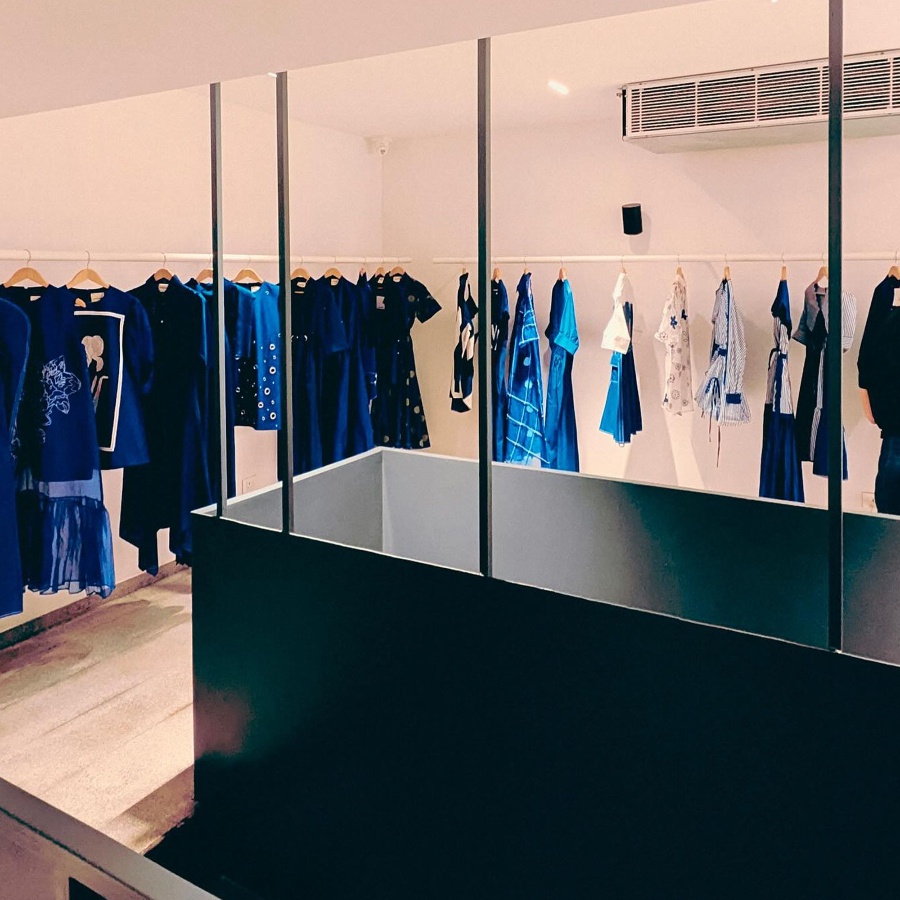The story at designer Gaurang Shah’s new atelier in Hyderabad begins right at the boundary wall. Keen on a particularly patchy shade of red, the designer mixed kumkum (vermilion) with cement, a flourish of artistry that sets the tone for what’s to come. He repeats this alchemy twice: blending indigo with cement for the facade, and haldi (turmeric) with cement to achieve colour and consistency only possible with natural dyes.
Building a sanctuary for textiles has been a long-cherished vision for the revivalist. So, when space opened up next to his eponymous restaurant (Gaurang’s Kitchen is known for its thali-based meals) in the city’s tony Jubilee Hills neighbourhood, it became his canvas to celebrate Indian handlooms spanning techniques, traditions, and geographies.

Gaurang’s Kalmakari looks and a display of textiles
The designer isn’t the only one to set up a sprawling new space in the city; he’s part of a retail renaissance sweeping Hyderabad. With labels like Ashdeen, Lovebirds, and Rimzim Dadu opening flagships here in recent months, the city is witnessing a creative surge that’s steadily reshaping its style map.
Textile appreciation 101
Spread over a whopping 22,000 sqft across three levels and conceptualised by architect Sona Reddy, each floor in Shah’s store has a museum space filled with wall art and textiles, apart from a dedicated boutique area to shop.
“Most museums showcase the works of the past; what of the present?” Shah, 52, questions. “I was keen to show the beauty of what’s happening right now around us.” What sets it apart is that it is not only dedicated to the art and artisans of the past, but it also acknowledges the wealth of contemporary crafts.
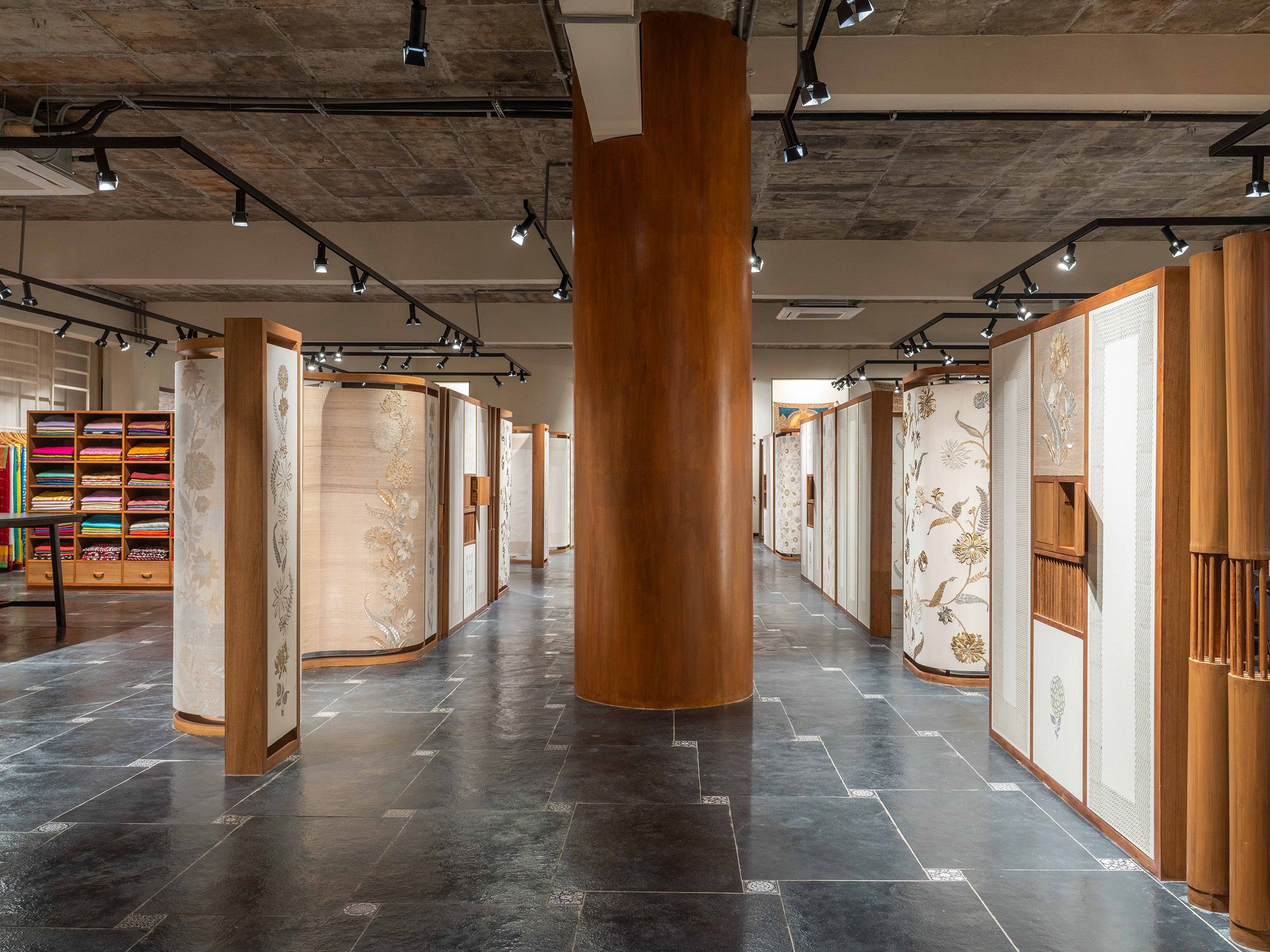
The first floor houses saris and is divided into cabins. Each partition is decorated in embroidery styles ranging from marodi work to jamdani
Each level is distinctly themed around a single art form. The first level, which displays saris, pays homage to kalamkari. The second floor, dedicated to women’s ready-to-wear, is dedicated to embroidery. On the walls, embellishment techniques from different regions of the country jostle with each other; think petit point from Kerala, mochi stitch from Gujarat, phulkari from Punjab, and kantha work from Bengal. The third storey consists of menswear and home decor honouring different types of jamdani, not bound to Bengal alone but showcasing the dexterity of the weave as it is practised from Kashmir to Andhra Pradesh.
An entrepreneur who transformed his family’s small matching centre into a thriving global enterprise, Shah says, “These crafts are not relics but living languages. I am interpreting them so that the immersive techniques of our country that are hidden in plain sight can find a fresh lease of life.”

A display of kalamkari saris. In the background, the 57 foot kalamkari panel
If walls could talk
In this cabinet of curiosities, the pièce de résistance, though, has to be a kalamkari panel that is 57 x 12 feet, made by a single karigar in the designer’s Tirupati cluster over two years and flanking nearly two walls on the first level. Depicting scenes from the Ramayana, Mahabharata, and Bhagavatham, it is a stunning tapestry of natural dyes where flowers in startling reds and blues, iconography of Lord Ganesha in natural hues of indigo, and scrolling vines in madder unfurl with the precision of a miniature painting. Interwoven with these scenes are delicate inscriptions in Telugu.
“It was made more than 10 years ago and happily forgotten in a warehouse. When Sona asked for something that depicts the character of the place, it felt like the right time and fit to pull it out,” grins Shah.
The first floor also houses a display of 26 saris hung from a height of nine feet, set against Kadapa flooring and black walls that make the perfect backdrop for these canvases. (Each month is dedicated to one weave; it’s patola this month, with jamdani coming up next.)

